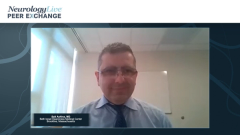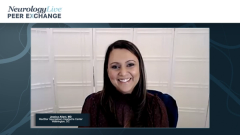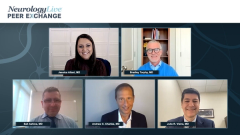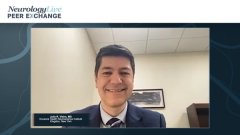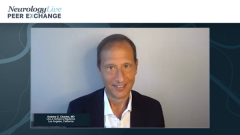
Pathophysiology of Migraine
Andrew C. Charles, MD, and Sait Ashina, MD, provide an overview of the pathophysiology of migraine and discuss its 5 clinical phases.
Episodes in this series

Jessica Ailani, MD: Hello, and welcome to this Neurology Live® Peer Exchange titled “Optimal Management of Acute and Preventive Migraine.” I’m Dr Jessica Ailani, the director of the MedStar Georgetown Headache Center and a professor in the department of neurology at MedStar Georgetown University Hospital in Washington, DC. Joining me are my friends and colleagues Dr Bradley Torphy, the medical director of the Headache Centers of America and the managing director of the Chicago Headache Center and Research Institute in Chicago, Illinois; Dr Sait Ashina, an assistant professor of neurology at the Beth Israel Deaconess Medical Center in Brookline, Massachusetts; Dr Andrew Charles a professor of neurology at the UCLA School of Medicine in Los Angeles, California; and Dr Julio Vieira, a headache specialist and an epidemiologist at Nuvance Health in Kingston, New York, and an assistant professor of neurology at Albert Einstein College of Medicine in the Bronx, New York. Welcome, friends. I’m excited that you guys are joining me. Let’s get started talking about migraine.
Our first topic is going to go through an overview of migraine. We’re going to get into the pathophysiology of migraine and how it pertains to clinical practice. I thought we’d start by asking Dr Charles about the biological pathways that underline the symptoms associated with migraine. Dr Charles, can you walk us through some of the pathophysiology of migraine and how we might think about that clinically when we’re seeing our patients?
Andrew C. Charles, MD: We have to start with the concept that a migraine attack is much more than just a headache. It’s a wide idea of symptoms that can evolve over hours to days. Broadly speaking, the phases of a migraine attack can be described as the prodromal, or premonitory, phase; the aura phase; the headache phase; the postdrome phase; and the interictal phase. The symptoms that happen during the premonitory phase can be wide-ranging and variable. They include neck pain, mood change, fatigue, change, appetite, light sensitivity, and a host of others. The aura phase typically comprises visual aura symptoms but may also be sensory or language or rarely motor or brain stem symptoms. Those typically last 15 minutes to an hour…. A lot of premonitory and sometimes even aura phase symptoms can persist into the headache phase of the attack. In the postdrome phase are the residual symptoms that persist after headache, including some of the same ones that were in the premonitory phase: neck pain, fatigue, mood change, change in appetite. Finally, the interictal phase is the time between attacks.
Some people, especially with those with chronic migraine, may even have persistent symptoms between attacks. In terms of pathophysiology, it’s a very complex cascade of events. One thing that’s important is that with functional imaging studies, fMRI [functional MRI], and PET [positron emission tomography], you can see changes in brain activity in different brain regions that correlate with this variety of symptoms. For example, changes in the cortex corresponding with visual symptoms, and changes in sensory cortex or thalamus corresponding with sensory symptoms. We’re beginning to get a picture of the different brain regions that are activated or inactivated during these phases of a migraine attack.
Jessica Ailani, MD: Sait, how do you bring this to your patients in clinic? Andy talked to us about the different phases. I’m sure that in clinic, patients talk to you about their migraines. How do we refocus and get the broad picture, asking them about prodrome and postdrome? What do they tell you? What kinds of questions do you ask to get to the bottom of this? How long do these phases usually last? What do patients usually tell you?
Sait Ashina, MD: My first question about those symptoms starts with my headache intake form, which I give my patients at their initial visits. In that form, there are questions about the phases, which Dr Charles mentioned: premonitory phases or symptoms and the headache symptoms, as well as the postdrome symptoms, which I ask about. More recently, I started to ask the patients about the time between their attacks. What happens to them between their attacks? How do they feel? There are studies showing that the patients are disabled between their attacks because they sometimes may experience symptoms. I usually ask them what happens before your headache starts, hours or even days before. What symptoms they experience. I even give them some examples, so they can go over these examples and check the boxes if I have difficulty remembering. It may be difficult for patients to express about their premonitory symptoms because they never think about them. As I said, the intake forms help them do that and help receive this information. Migraine is not just a headache. It also includes symptoms before the headache. Then there’s a headache phase. There may be some aura symptoms, and then there is so-called resolution phase, or postdrome phase, where the patients can experience some of the symptoms. This could be as debilitating as the headaches themselves.
Jessica Ailani, MD: You talked about the interictal period, the time between attacks. That’s relevant to patients with migraine, whether they have what we call episodic or chronic migraine.
Transcript Edited for Clarity
Newsletter
Keep your finger on the pulse of neurology—subscribe to NeurologyLive for expert interviews, new data, and breakthrough treatment updates.

